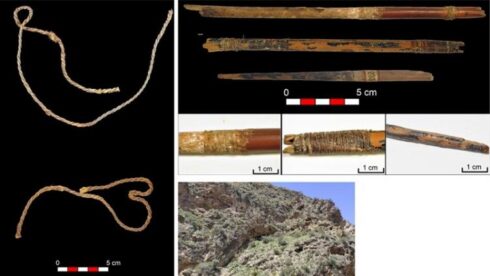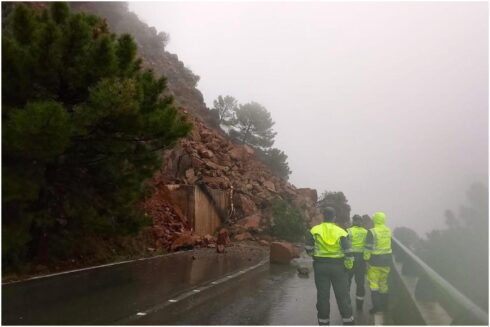A NEW discovery at the Cave of Los Murcielagos in Spain has highlighted the impressive archery expertise of Iberian Neolithic societies.
Archaeologists have uncovered sophisticated archery tools and techniques that challenge long-held assumptions about the technological capabilities of early European agricultural societies, dating back to 5300-4900 BC
The dry and stable conditions of the cave in Albuñol (Granada) provided an unparalleled environment for the preservation of organic materials.
Among the most significant discoveries were arrows with intact feathers, fibre remnants, and two ancient bowstrings – crafted from animal sinews – making them the oldest known examples of their kind in Europe.
READ MORE:
- Pre-historic footwear dating back 6,200 years is discovered in caves in Spain’s Andalucia
- Pigments of the imagination: Why you should be seeking out caves in southern Spain this summer

These finds offer unprecedented insight into the materials and techniques used by early Iberian archers.
“In identifying these bowstrings, we confirmed that tendons from animals such as goats or ibex , wild boar or pigs and roe deer were employed,” explained Ingrid Bertin, lead author of the study. “This precise identification of the species involved highlights the specialised knowledge of these Neolithic communities.”
The bowstrings, skillfully twisted from animal tendons, demonstrate a high level of craftsmanship, providing the necessary flexibility and durability for use in archery. “This is a clear indication of technical expertise,” said Raquel Pique, coordinator of the study and researcher in UAB’s Department of Prehistory. “The level of sophistication in the creation of these tools challenges what we thought we knew about prehistoric weaponry.”
The team’s analysis also revealed the innovative use of local materials in the crafting of arrow shafts, marking the first confirmed use of reeds in prehistoric European arrow construction. The researchers discovered that the shafts were made from a combination of olive wood, willow, and reed wood – each selected for its unique properties. The dense, hard front sections of the shafts were paired with lightweight rears to optimise their performance.
Furthermore, birch bark pitch was applied to the shafts, offering both protection against the elements and an aesthetic touch that may have had symbolic significance.
The versatility and skill involved in selecting and working these materials reveal not only the Neolithic’s technological mastery but also their deep knowledge of the natural environment.
Theses are not the first relics of ancient humans found in the cave system. The oldest pair of shoes in Europe were found in the cave and may be much older than first thought, according to scientists.
Experts used carbon-dating techniques on 76 objects from the Cueva de los Murcielagos, at Albuñol which were dug out by miners in the 19th century.
About 20 pairs of the sandals are at least 6,200 years old — and possibly older — while other woven objects in the cave are dated back 9,500 years, according to a new study by scientists.
The shoes were 20.5 centimetres long and were well-preserved with the rest of the finds, helped by the low humidity levels of the area.
The oldest footwear in the world dates back approximately 10,000 years and was discovered in Fort Rock, Oregon, back in 1938.








